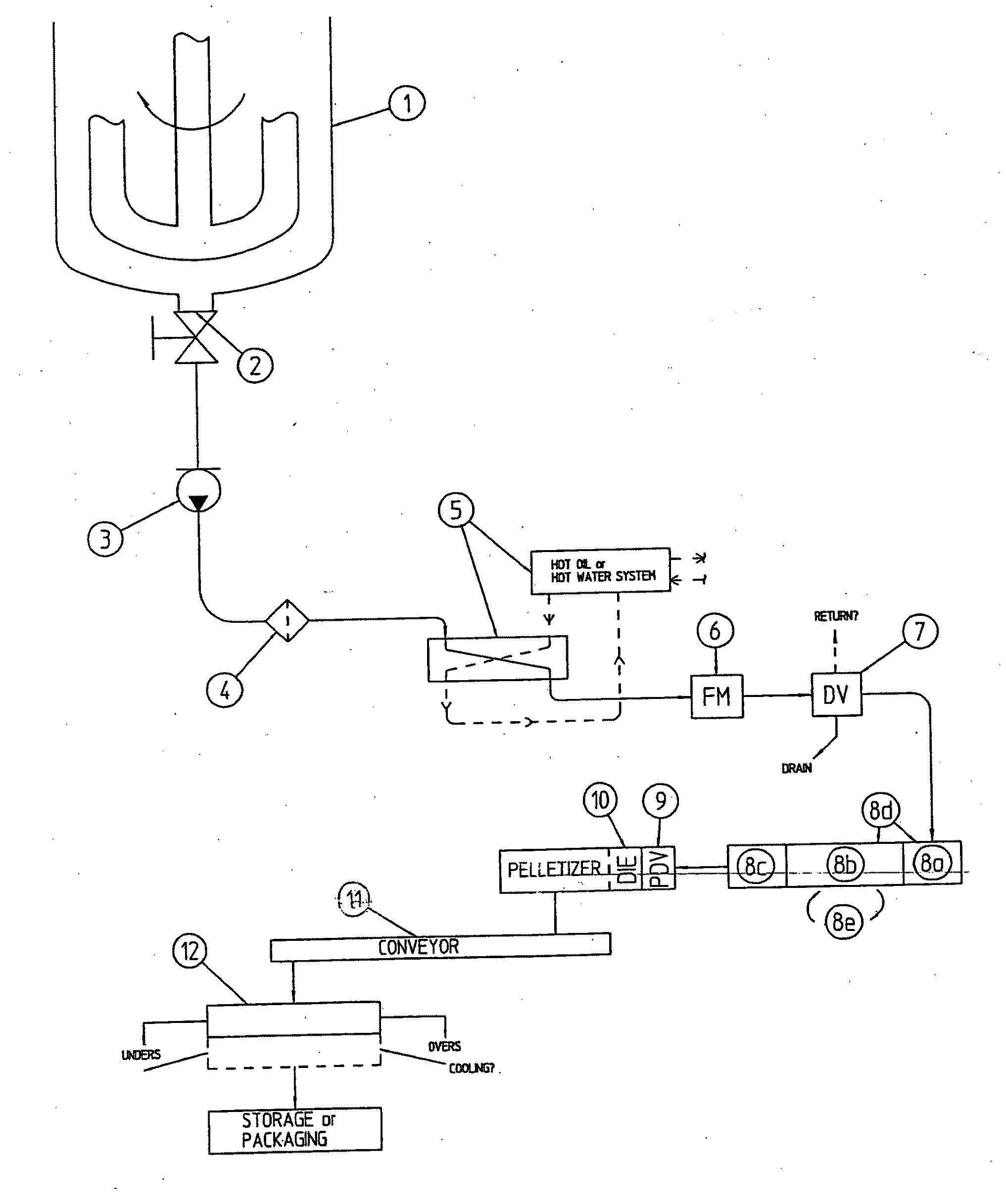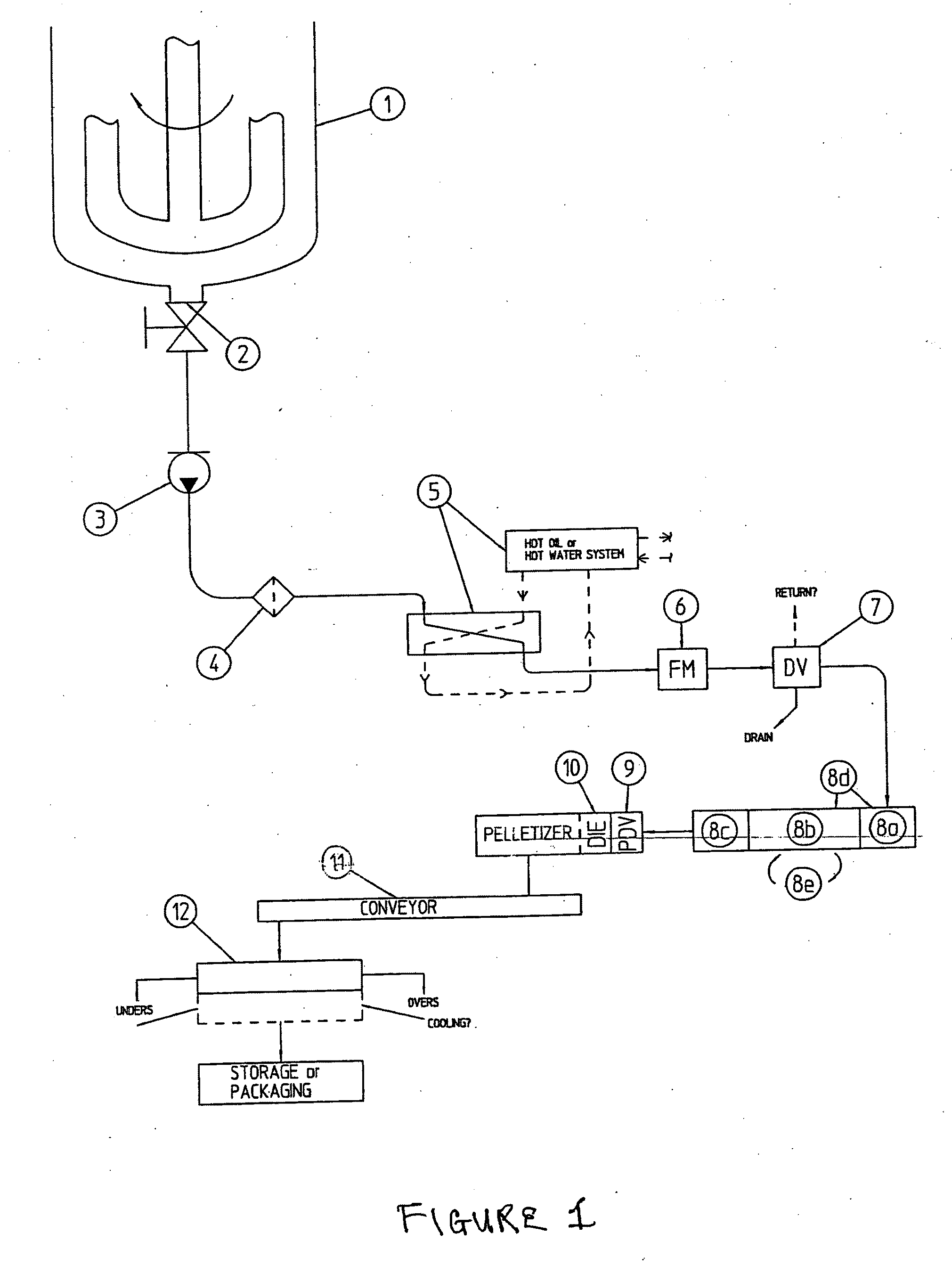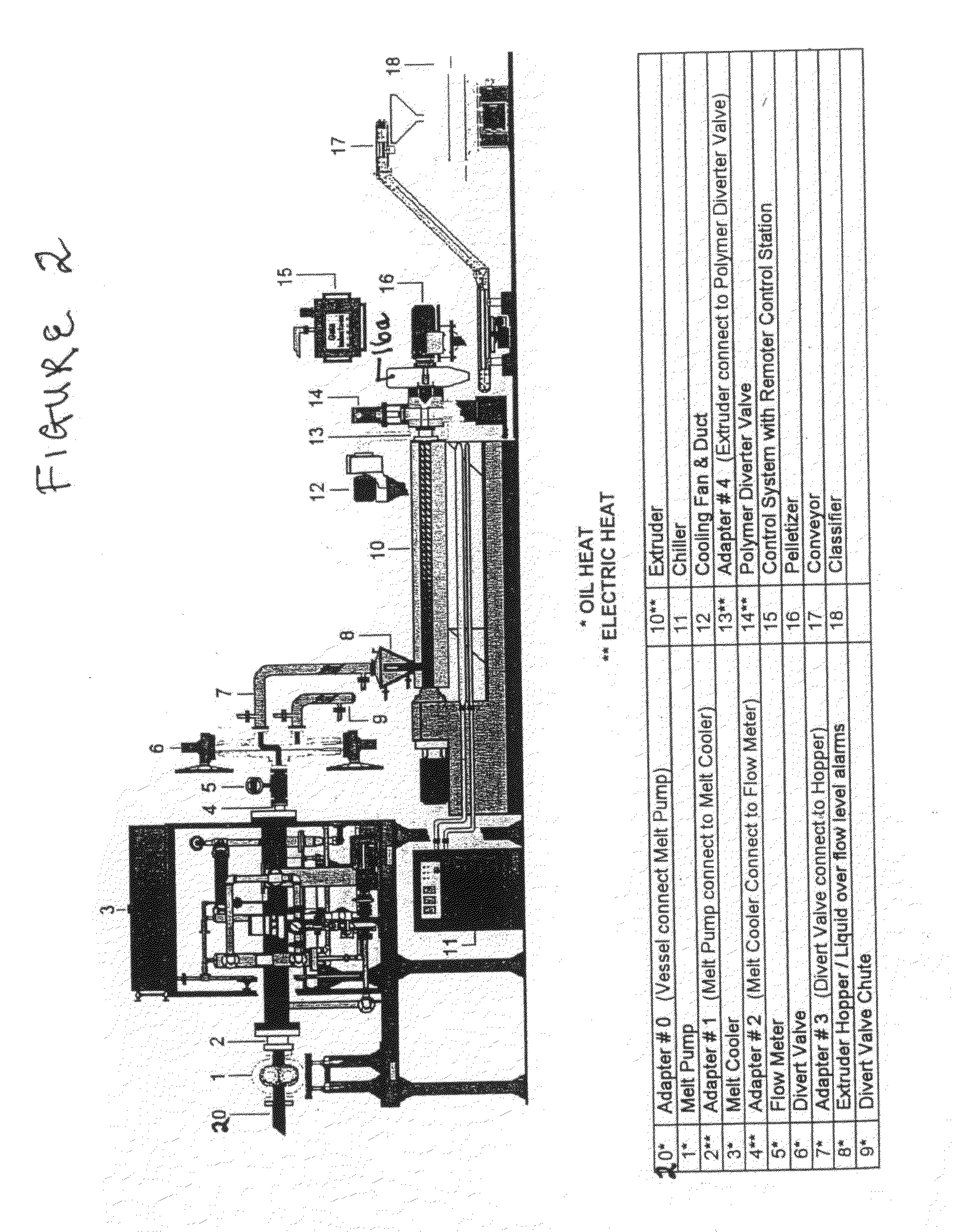The disadvantages to this method of manufacture include risk of
spillage and splash on operators, long periods of storage and much space to cool, risk of
contamination during pouring and generally such technique is very labor intensive.
Later when using these bricks or cakes, the total
mass is great and thus takes melt pots and time to re-melt the wax.
Adding more bricks to an existing container partly full of liquid wax also increases risk of splash to operators.
Dosing and conveying methods are not very sophisticated.
However, as the viscosities increase there is a challenge to get the spray concept to work, as the wax would prefer to pour as a solid
stream or string.
Further, since these towers are quite tall, considerable space (in height and volume) and construction work are required.
Furthermore,
gas cooling is not the most efficient way to process polymers.
Thus, considerable energy is required to do the cooling and gas circulation functions, plus there is the large amount of construction insulation required for such large facilities and especially in locations where the ambient temperatures are quite high.
These precision polished belts can be very expensive and are quite susceptible to damage, and require tremendous cooling support units.
The belts can take up much floor space and in the event of rate increase (or
viscosity increase), need greater and greater lengths requiring aisles to be changed in
plant layout or worse.
In regard to wax grades with higher and higher viscosities, they tend to require the existing belt lines to significantly slow down, so as to increase
exposure to
cooling time, thus resulting in considerable loss in production output.
In addition, during humid seasons or in places where
humidity is high, the very cold steel belts can suffer condensation build up, thus making the waxes wet (and there is usually no
drying capability).
To compensate, an expensive cover could be installed over and around the belt process.
And without such a cover, the product is exposed to dust, insects and other contaminates, to be imbedded in the still molten waxes.
As such, many of the disadvantages are the same as described above for the “slats & chips” method.
Conversely, this process, which uses the principle of dropping “droplets” of wax onto the belt, is even more limited when approaching higher
viscosity grades where the wax product would rather pour onto the belt instead of dripping onto the belt.
Thus, this process tends to be limited to the low end
viscosity range.
Further “pastille” sizes can be very limited; meaning it gets less efficient and practical for the belt process to make “micro-pellet” sizes.
However, efforts to pelletize waxes using
underwater pelletizer and centrifugal dryer equipment has attained mixed results and, in many cases, the underwater
pelletizing methodology has produced unsuccessful results.
What is the basic problem for underwater pelletizing of waxes is the fact that many of these waxes go from an extremely low viscosity (much lower than normally observed in the other above mentioned polymers) to become a solid within a very
narrow range of temperature, typically from about 5° C. to about 20° C. In contrast, the band or range of temperatures for many of the other polymers on which underwater pelletizing is applicable are much wider from being in a more
liquid state to a more
solid state.
These properties can cause serious problems when attempting to pelletize waxes using underwater pelletizing equipment.
The leading problem is that as the wax passes through the die plate (a
metal plate with a relatively concentric circle or circles of
extrusion orifices), the wax will have a tendency to freeze-off within the
extrusion orifices.
Thus, as the wax strand passes through the die
extrusion orifice, the strand loses much of its remaining internal
heat energy into the surrounding die extrusion orifice wall as it approaches the exit.
And because of its sharp melt point, the wax transitions very quickly into a
solid state before exiting the orifice thus creating a blockage in that orifice.
This situation is very unpredictable for the pelletizing process, and yields non-
uniform size pellets.
Thus the process is very unstable to continue.
Furthermore, increasing
back pressure causes slipping within the upstream pumping equipment, which can occur easily because of the very low viscosities of the wax in the molten /
liquid state.
The loss of rate from the pump to the die further complicates the issue of reaching an equilibrium state, and thus further adds
instability to the process.
Additionally, the pumping equipment while working to create pressure and flow of the wax, while suffering slip, will add more energy into the wax, thus driving the already low viscosity, even lower, making it even more difficult to establish a stable running
system with predictable pelletizing results.
Yet another problem associated with pelletizing waxes is that a
common property of most waxes, unlike many of the polymers / plastics on which underwater pelletizers work well, is they have a very low “melt strength”.
In the case of many waxes, the melt strength is nearly non-existent, and as the liquid or semi-liquid wax strand exits the die orifice, the
impact of the cutter blade trying to shear the strand into a pellet actually causes an
impact explosion or shattering of the pellet into many fragments.
Even if shredded coconut or fines-type particles might be acceptable, there remain the problem of how to get such wax particles separated from the water and dry.
Standard centrifugal dryers that typically support the underwater pelletizer cannot be used effectively.
For example, with many grades of wax where suitable / normal pellet geometry could be achieved with an underwater pelletizer, such as a 3 mm
diameter cylinder, lens or sphere, these wax pellets could be brittle entering the centrifugal dryer at the colder process water temperatures, thus breaking the pellets causing waste in fines or dust.
Conversely, if the
water temperature is warmed to reduce breakage, the higher temperature causes the pellets to be softened and more likely to scrape off particles from the wax pellet surfaces as they pass through the dryer, thus still producing fines and dust.
Another problematic issue associated with using a centrifugal type dryer can be the pellet deformation effects inside of the dryer.
This could be an issue whenever the deformation temperature of the material is below the actual temperature of the material at the time it passes into and through the centrifugal dryer.
The most common problem observed is the material getting embedded onto or into the dryer rotor screens which leads to the screens getting plugged over time with the materials.
This embedding and / or plugging reduces or eventually eliminates the ability of the dryer to get the material dry enough for subsequent packaging, storing or
processing.
 Login to View More
Login to View More 


